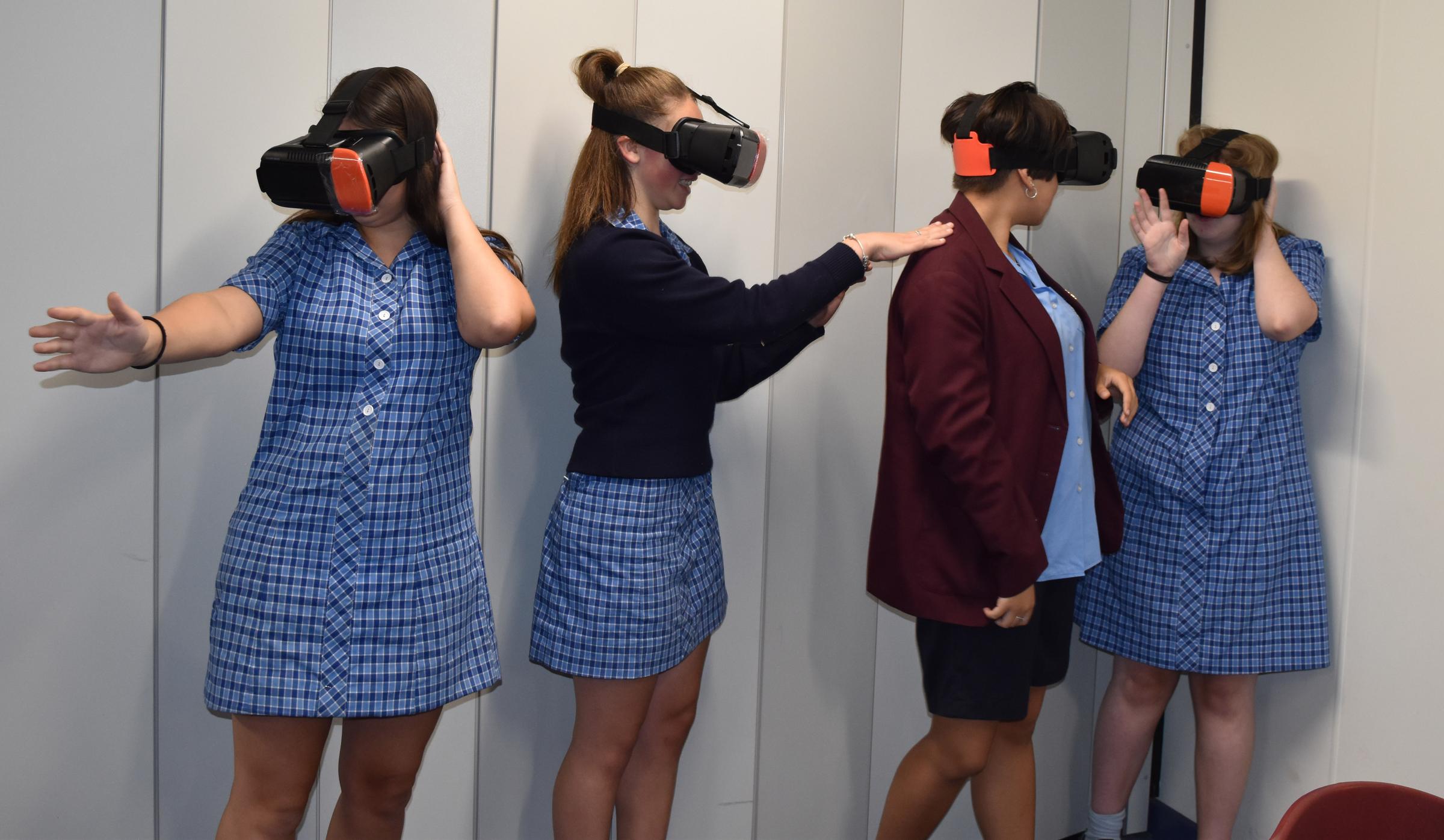Technology

All students complete one compulsory unit of Technology in Year 9.
This learning area covers:
- Digital Technology (technology, coding, 3D printing)
- Materials (textiles, food and wood)
- Systems (mechanics & electronics)
Strand | Unit | |
Elective | Digital Technologies | Next Gen Design (3D Printing, coding & electronics) |
Design Technologies | Design it. Wear it. (Textiles & Plastics) | |
Design it. Workshop it. (Wood & Metals) | ||
International Foods & Culture |
Next Gen Design – 3D printing a prosthetic hand
Aim
Next Generation Design is an elective that will expose students to 21st Century design skills with both hardware and software. Students will build skills in creativity, collaboration, critical thinking and communication. The focus of this course is to solve a real world problem using emerging technology and the Design Thinking process. The course seeks to develop skills in research, design, engineering, technology and ‘hands-on’ construction.
Content
Students will:
- Experience how Virtual Reality (VR) can be used to let non-amputees understand the hardships of losing a limb and how to adapt to wearing a prosthetic and also how it can train amputees learn to use their new prosthetic limbs.
- Design a prosthetic ‘hand’ using basic 3D CAD (Computer Aided Drawing) software such as TinkerCAD and Fusion 360.
- Prototype and construct a 3D printed ‘hand’ to perform one function.
- Use electronics and coding to investigate how motors can be used to provide motion to joints.
- Compile a digital portfolio consisting of research, sketches, designs and reflections.
Assessment
Students will be assessed on their investigation and design development, the final 3D printed ‘hand’ and their creativity, collaboration, critical thinking and communication.
Design it. Workshop it. (Wood & Metals)
Aim
This unit concentrates on developing design and practical skills in three-dimensional product-making using rigid materials. Students will use the design process to explore their own creativity, technical drawing, and construction skills specific to the materials of metal and wood.
Content
Students will work on a number of exercises that will extend their practical skills in product design and manufacture. They will develop skills in technical drawings and designing. Student have the opportunity to develop their practical skills in areas such as:
- Soldering and joining
- Metal cutting and piecing
- Machine and hand techniques in wood
Assessment
The students will be assessed on investigation and design development, as well as their final production work. A folio will be assessed for the generation, development and evaluation of the effectiveness of the product. A research assignment will examine the features of sustainable design.
Design it. Wear it. (Textiles & Plastics)
Aim
In this unit students have the opportunity to learn about Sustainability, the design process and integrating digital technologies into product design. This unit extends the students’ knowledge of equipment, materials and construction techniques used with rigid and non-rigid materials. Students will then be able to design and make their own products using textiles, plastics and digital technologies. Students will work on a number of projects that will extend their practical skills in fashion design and technology.
Content
They will develop designing and making skills:
- Experience with specialist equipment: sewing machines, 3D printer, laser cutter, etc
- Research and design assignment
- Method and material trials with evaluations
- Design Folio: Technical drawing and production planning
- Practical work: Construction of a product
Assessment
Students will be assessed on their investigation and design development, their final production pieces, and a research assignment. A folio will be assessed for the generation, development and evaluation of their work.
Special Conditions
Students will be required to provide the following items to complete the course:
- Fabric and specialty materials for construction of their finished product
International Foods and Culture
Aim
Students study the impact of immigration on the Australian diet and broaden their knowledge of foods from other countries. Students will learn how to develop food products from a variety of cultures and learn the historical norms behind each cuisine, whilst being aware of the sustainability needs of the future.
Content
Students will focus on demonstrating their knowledge and understanding of a variety of countries, cultures and their cuisines. Students will safely and hygienically prepare, produce and present a wide variety of foods, demonstrating the cultural cuisine of each country studied in class.
Assessment
Productions and classwork
